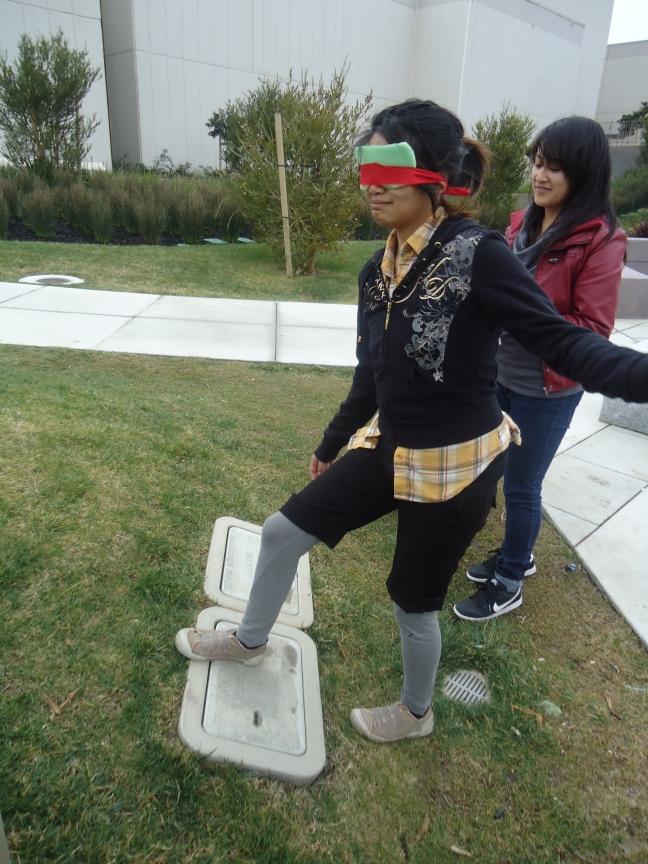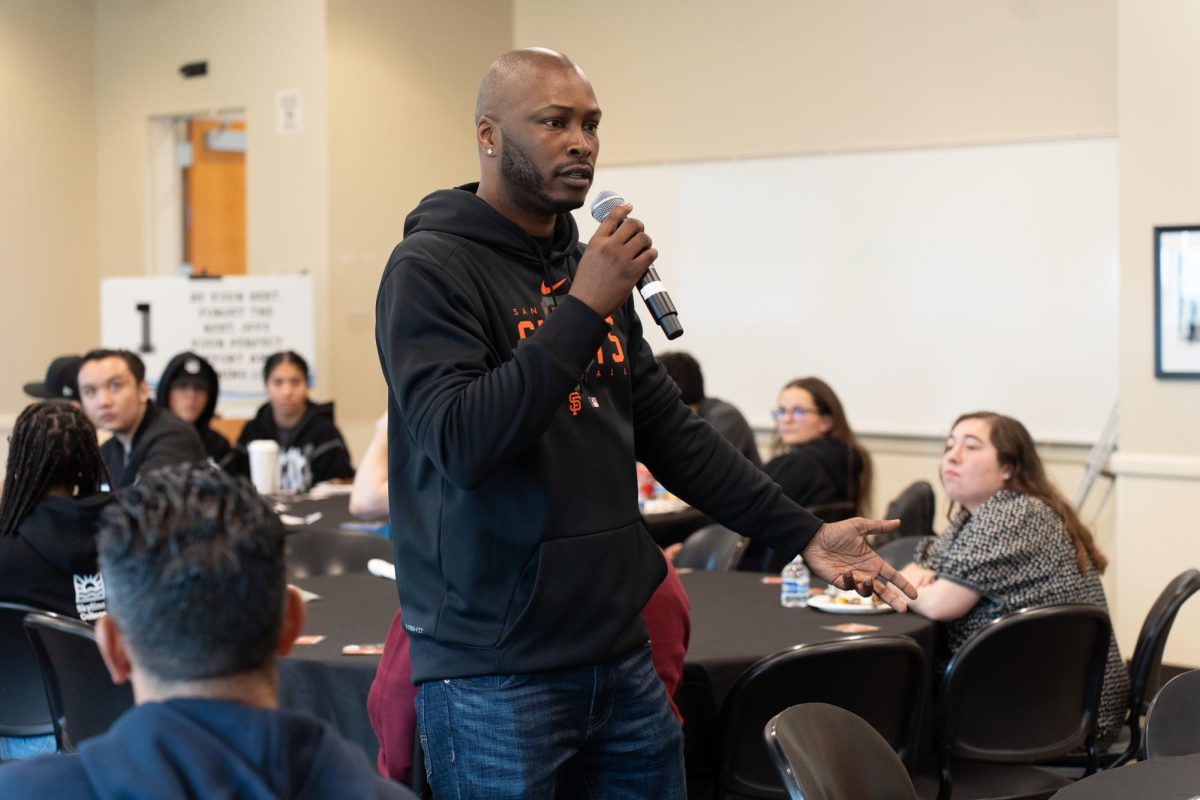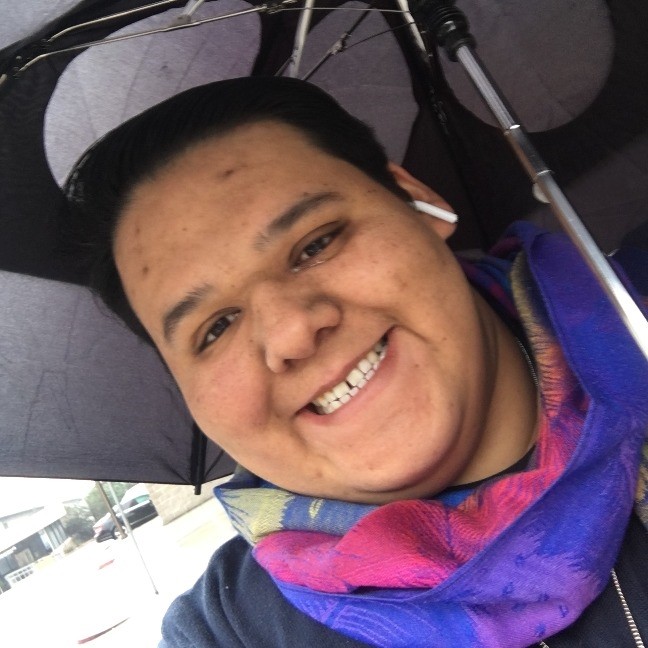On February 15, students in blindfolds were seen walking around campus being led by partners who gave them step-by-step directions.
For 20 years now Professor of Psychology Jennifer Merrill has had her students perform in an experiment called the blind walk, in which students wearing blindfolds are instructed to use their other senses to complete specific challenges. This is the eleventh year Merrill has performed the experiment at Skyline.
Some challenges included: “Have your blindfolded person read a license plate,” “Have your blindfolded partner use their available senses to tell you where they are on campus,” and “Direct the blindfolded person to two objects. Have them attempt to identify the objects by using their available senses.”
Merrill said that the reason she assigns this activity to her students year after year is to try to instill in them a better understanding of the curriculum through a more hands-on method.
“We do the blind walk to illustrate some principles that we talk about in class. Right now, we’re talking about sensation, perception,” Merrill said. “But those are concepts that students have a hard time identifying with or relating to, so one of the reasons I do the blind walk is to help them become aware of their different thresholds.”
The psychology class where the students received the assignment is located in building 2 and meets from 8:10 a.m. to 9:25 a.m.
Students started walking from the classroom and were instructed to go around campus to perform each challenge while making sure not to touch one another. Most students found their way to the quad.
Most of the students found the blind walk to be a difficult experiment, some for reasons different from others. Jorge Jimenez, for example, was partnered with a childhood friend but still thought of it as a trying experience.
“It’s kinda hard to trust the person guiding you when you can’t see,” Jimenez said. “They may tell you to go straight, but you’ll go left or right.”
Other students found the difficult portion of the experiment to be the act of guiding the blindfolded subject around campus giving them instructions.
“We used a lot of communication; I used degrees to tell [my partner] where to face and how many steps to take forward or back,” said Jayzel Reyes, who had trouble guiding her partner. “It was really hard to get [my partner] to not bump into anything; I made her bump into a door.”
However, there were some students who found the experiment to be so easy that it was fun.
Students like Khandice Weintraub thought it was so fun that she did the blindfolded segment twice, once going down to the quad and again going back up to class.
“It was pretty easy using shadows and my other senses to get around,” said Weintraub, who also stated that the waterfall was her greatest reference point. “The waterfall would direct me where to go because as soon as you hear it, you can tell where everything else is.”
Weintraub started at the classroom on the top floor of building 2 and worked her way down the stairs and eventually made her way to the cafeteria and out to the quad. Her biggest challenge was going up the stairs on the way back to class.
When asked how long she plans on doing this, Merrill stated that she doesn’t have any intentions of discontinuing the experiment because of all the positive feedback she receives year after year.
“Students enjoy this activity; it’s a great way to build a community within the classroom because you’re having students work together and build a rapport,” Merrill said. “It meets the intended purposes, and I get students to be more aware of things they’d never otherwise focus on, so it meets the intention of the activity.”









